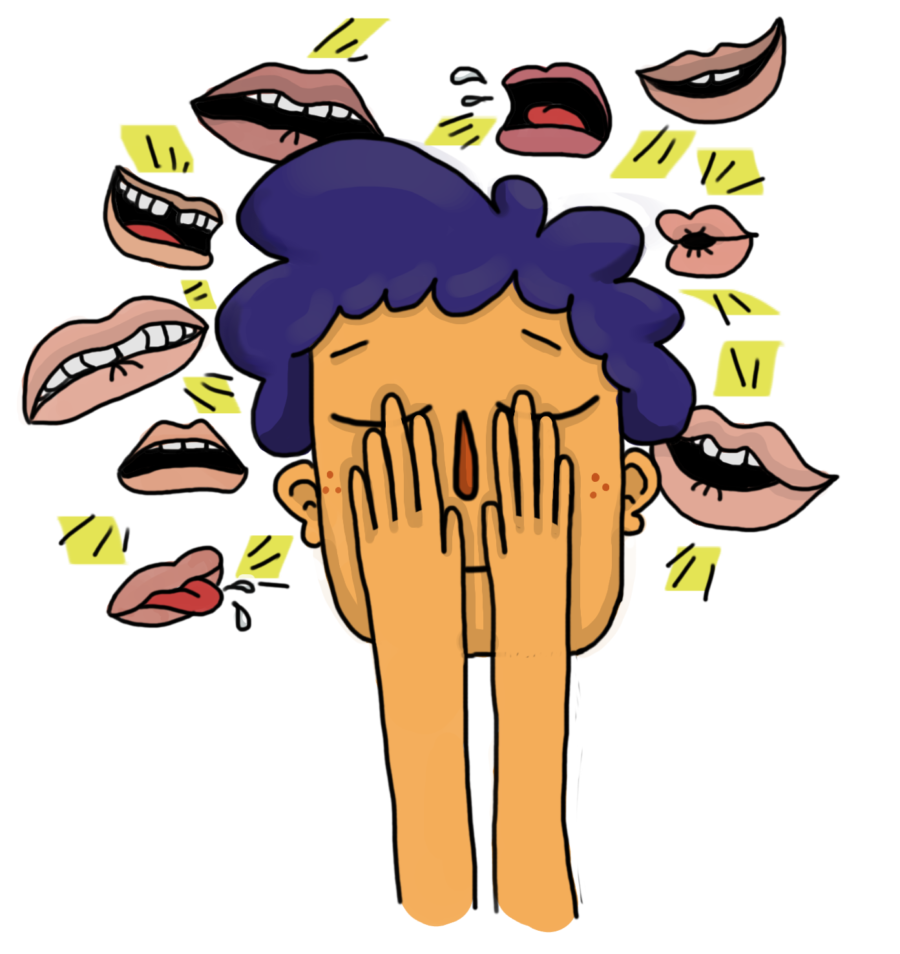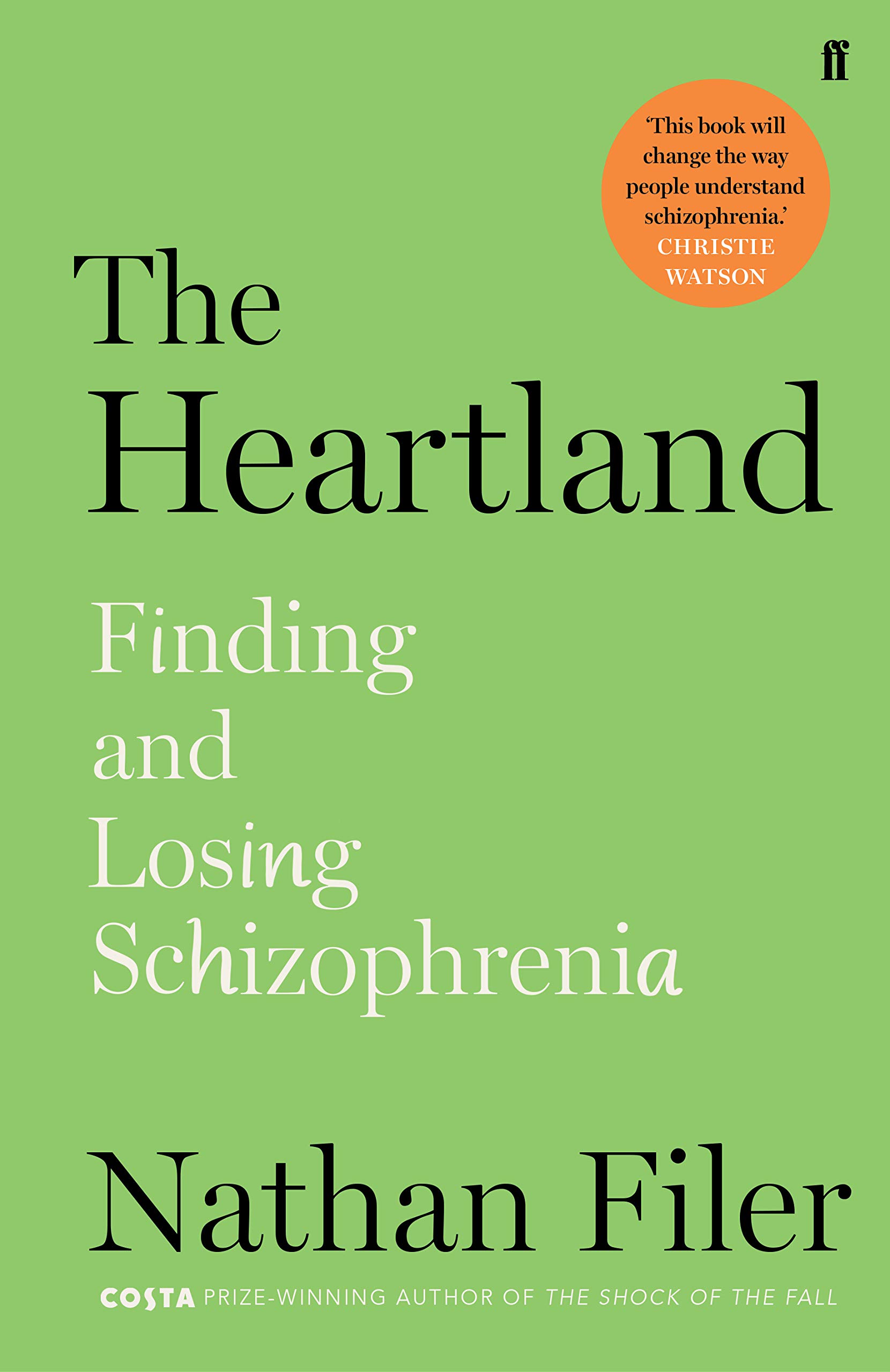
What does it mean to have schizophrenia? And what is the status of ‘Schizophrenia’ as a concept in our current time? Annabel reviews two books: The Collected Schizophrenias by Esmé Weijun Wang and The Heartland: Finding and Losing Schizophrenia by Nathan Filer.
What does it mean to have schizophrenia? And what is the status of ‘Schizophrenia’ as a concept in our current time? Annabel reviews two books: The Collected Schizophrenias by Esmé Weijun Wang and The Heartland: Finding and Losing Schizophrenia by Nathan Filer.

Illustratie: Carolien de Bruin
‘Schizophrenia does not exist’. This rather controversial point of view is held by Jim van Os, a Dutch Professor of Psychiatry and Epidemiology. Van Os argues that the diagnosis of schizophrenia should be abandoned because the classification is merely based on an artificial agreement with the emphasis on it being a hopeless brain disease, one for which most people still seem to think no cure will be effective. Diagnosing someone with schizophrenia leads to a lifelong sentence of stigmatization, van Os argues. Instead of schizophrenia, we should talk about a psychosis spectrum disorder or ‘psychosis sensitivity’.
For now, the diagnosis schizophrenia is still being used in psychiatry. What does it mean then, to be diagnosed with schizophrenia? This is the question Esmé Weijun Wang tries to answer in her book, The Collected Schizophrenias. Wang, who has received a bunch of diagnoses in her life, is now officially diagnosed with schizoaffective disorder, bipolar type.
While Professor van Os calls for the rejection of the diagnosis schizophrenia, Wang argues that it might not be all that bad to have certain labels. She writes from her own experience when explaining that these labels give a psychiatric patient something to hold on to, namely the reassurance that you’re not the only one who’s been hearing voices, not the only one who’s been so afraid they would not dare to get out of their houses, and not the only one who sometimes experiences such a crippling sadness that life no longer seems to be worth living anymore. Finding out there is a name for the awful experiences you’ve been going through provides a framework on how to deal with these experiences.
“Names provide a framework on how to deal with certain experiences”
In her book, Wang takes us on a trip through her years as a Yale student, the university she eventually had to leave because she had been hospitalized too many times while studying there. She describes the advice she got in her freshman year from some of her acquaintances: ‘Never tell them you’ve thought about killing yourself,’ for this would certainly lead you to end up at the Yale Psychiatric Institute, they said. Ridiculous as it may sound, this was sound advice for Wang if she wanted to stay at Yale. Long story short: getting admitted to the psychiatric hospital too many times, which was twice in Wang’s case, would be reason enough for the board of Yale to ask you to leave the university, for good. This is just one of the many poignant examples Wang sketches. Throughout The Collected Schizophrenias she shows us how having a psychiatric diagnosis, and in particular, one that places you in the category of the ‘schizophrenias’, leads you to be treated like a mad man, with all of the consequences this entails.
Wang gives us a hauntingly honest view into what life dealing with a psychiatric diagnosis is like, which is something that Nathan Filer, in his book The Heartland: Finding and Losing Schizophrenia, does as well. Filer, who once used to work as a psychiatric nurse before becoming a writer, sheds his light on all that there is to know about schizophrenia. In his book, he combines the latest scientific insights about schizophrenia with personal stories from people he has met during his work as a psychiatric nurse. Amongst others, he touches upon topics such as receiving diagnosis, stigma and treatment.
This combination of scientific insights and personal stories is what makes The Heartland such a powerful book. The personal stories that are shared show us how awfully difficult life can be when living with a schizophrenia diagnosis. Take Erica for example, who, after being admitted to a psychiatric hospital because of going through an episode of psychosis, was kicked out of her family home by her own mother. At the same time, we learn about the way schizophrenia is viewed in modern-day society. Filer does this by looking into questions such as what it might tell us that there is still an ongoing search for brain abnormalities in people diagnosed with schizophrenia.


What seems to be an important point to be taken from this book is Filer’s view on stigma: ‘I find it a bit troubling how the subject of stigma has come to dominate so much of our discourse on mental health, especially via social media. A lot of this is led by (granted, well-meaning) high-profile individuals and celebrities who talk and tweet and post messages about mental health stigma and the problem with stigma and the need to reduce stigma. And the whole time we might just be looking in the wrong direction.’
Filer goes on to argue that talking about stigma might dismiss what seems to be the bigger issues at hand, such as poverty, social exclusion and prejudice. Receiving the diagnosis schizophrenia might lead to stigma and this is one of the reasons why Van Os wants to erase the word schizophrenia from the mental health vocabulary as well. The fact that this diagnosis can lead to prejudice and exclusion is underscored by personal experiences, such as the ones shared by Wang
The message both Wang and Filer seem to stress is that, even though it might be easy to forget, we should always keep in mind that psychiatric diagnoses are social constructs, not entities existing on their own. Filer emphasizes that whole lives have disappeared beneath this language, and urges us to carefully choose our words when talking about mental health. Labeling someone as ‘schizophrenic’ or ‘psychotic’ can stick with them their whole life, even when someone eventually feels a lot better than they used to. Criticism against the Diagnostic and Statistical Manual of Mental Disorders (DSM) is on the rise and more and more people are calling for a dimensional rather than a taxonomic system of psychiatric classifications (First, 2005). Despite this, we must not forget that some individuals find comfort in receiving a diagnosis, as is illustrated by Wang. We should therefore not throw the baby out with the bathwater and instead perhaps focus on a system in which some form of diagnosis might exist, while at the same time be cautious of diagnoses taking on a life of their own. By both shedding their light on the many misconceptions that surround schizophrenia, Filer and Wang help us understand the importance of this approach. <<
References:
– Filer, N. (2019). The Heartland: finding and losing schizophrenia. Faber & Faber.
– First, M. B. (2005). Clinical utility: a prerequisite for the adoption of a dimensional approach in DSM. Journal of abnormal psychology, 114(4), 560.
– Wang, E. W. (2019). The Collected Schizophrenias: Essays. Graywolf Press.
‘Schizophrenia does not exist’. This rather controversial point of view is held by Jim van Os, a Dutch Professor of Psychiatry and Epidemiology. Van Os argues that the diagnosis of schizophrenia should be abandoned because the classification is merely based on an artificial agreement with the emphasis on it being a hopeless brain disease, one for which most people still seem to think no cure will be effective. Diagnosing someone with schizophrenia leads to a lifelong sentence of stigmatization, van Os argues. Instead of schizophrenia, we should talk about a psychosis spectrum disorder or ‘psychosis sensitivity’.
For now, the diagnosis schizophrenia is still being used in psychiatry. What does it mean then, to be diagnosed with schizophrenia? This is the question Esmé Weijun Wang tries to answer in her book, The Collected Schizophrenias. Wang, who has received a bunch of diagnoses in her life, is now officially diagnosed with schizoaffective disorder, bipolar type.
While Professor van Os calls for the rejection of the diagnosis schizophrenia, Wang argues that it might not be all that bad to have certain labels. She writes from her own experience when explaining that these labels give a psychiatric patient something to hold on to, namely the reassurance that you’re not the only one who’s been hearing voices, not the only one who’s been so afraid they would not dare to get out of their houses, and not the only one who sometimes experiences such a crippling sadness that life no longer seems to be worth living anymore. Finding out there is a name for the awful experiences you’ve been going through provides a framework on how to deal with these experiences.
“Names provide a framework on how to deal with certain experiences”
In her book, Wang takes us on a trip through her years as a Yale student, the university she eventually had to leave because she had been hospitalized too many times while studying there. She describes the advice she got in her freshman year from some of her acquaintances: ‘Never tell them you’ve thought about killing yourself,’ for this would certainly lead you to end up at the Yale Psychiatric Institute, they said. Ridiculous as it may sound, this was sound advice for Wang if she wanted to stay at Yale. Long story short: getting admitted to the psychiatric hospital too many times, which was twice in Wang’s case, would be reason enough for the board of Yale to ask you to leave the university, for good. This is just one of the many poignant examples Wang sketches. Throughout The Collected Schizophrenias she shows us how having a psychiatric diagnosis, and in particular, one that places you in the category of the ‘schizophrenias’, leads you to be treated like a mad man, with all of the consequences this entails.
Wang gives us a hauntingly honest view into what life dealing with a psychiatric diagnosis is like, which is something that Nathan Filer, in his book The Heartland: Finding and Losing Schizophrenia, does as well. Filer, who once used to work as a psychiatric nurse before becoming a writer, sheds his light on all that there is to know about schizophrenia. In his book, he combines the latest scientific insights about schizophrenia with personal stories from people he has met during his work as a psychiatric nurse. Amongst others, he touches upon topics such as receiving diagnosis, stigma and treatment.
This combination of scientific insights and personal stories is what makes The Heartland such a powerful book. The personal stories that are shared show us how awfully difficult life can be when living with a schizophrenia diagnosis. Take Erica for example, who, after being admitted to a psychiatric hospital because of going through an episode of psychosis, was kicked out of her family home by her own mother. At the same time, we learn about the way schizophrenia is viewed in modern-day society. Filer does this by looking into questions such as what it might tell us that there is still an ongoing search for brain abnormalities in people diagnosed with schizophrenia.
“Personal stories show us how difficult life can be when living with a schizophrenia diagnosis”
What seems to be an important point to be taken from this book is Filer’s view on stigma: ‘I find it a bit troubling how the subject of stigma has come to dominate so much of our discourse on mental health, especially via social media. A lot of this is led by (granted, well-meaning) high-profile individuals and celebrities who talk and tweet and post messages about mental health stigma and the problem with stigma and the need to reduce stigma. And the whole time we might just be looking in the wrong direction.’
Filer goes on to argue that talking about stigma might dismiss what seems to be the bigger issues at hand, such as poverty, social exclusion and prejudice. Receiving the diagnosis schizophrenia might lead to stigma and this is one of the reasons why Van Os wants to erase the word schizophrenia from the mental health vocabulary as well. The fact that this diagnosis can lead to prejudice and exclusion is underscored by personal experiences, such as the ones shared by Wang
The message both Wang and Filer seem to stress is that, even though it might be easy to forget, we should always keep in mind that psychiatric diagnoses are social constructs, not entities existing on their own. Filer emphasizes that whole lives have disappeared beneath this language, and urges us to carefully choose our words when talking about mental health. Labeling someone as ‘schizophrenic’ or ‘psychotic’ can stick with them their whole life, even when someone eventually feels a lot better than they used to. Criticism against the Diagnostic and Statistical Manual of Mental Disorders (DSM) is on the rise and more and more people are calling for a dimensional rather than a taxonomic system of psychiatric classifications (First, 2005). Despite this, we must not forget that some individuals find comfort in receiving a diagnosis, as is illustrated by Wang. We should therefore not throw the baby out with the bathwater and instead perhaps focus on a system in which some form of diagnosis might exist, while at the same time be cautious of diagnoses taking on a life of their own. By both shedding their light on the many misconceptions that surround schizophrenia, Filer and Wang help us understand the importance of this approach. <<



